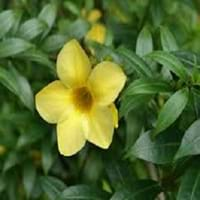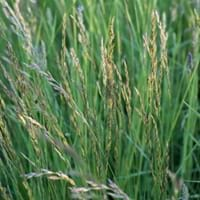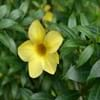Life Span
Perennial
Annual
Origin
Hybrid origin
Eastern Europe, Northern Europe, Russia/Siberia, Western Asia
Types
Allamanda voilacea
Allamanda violacea Cherry Jubilee
Allamanda x Alba (Blanca)
Allamanda Cream
Allamanda Chocolate
Allamanda Indonesia Sunset
Allamanda hendersonii
Not Available
Number of Varieties
Not Available
Habitat
gardens, Grassland, Roadsides, Tropical regions
Grassland
USDA Hardiness Zone
10-14
3-7
AHS Heat Zone
12-10
7 - 1
Sunset Zone
H1, H2, 24
A2, A3, 1a, 1b, 2a, 2b, 3a, 3b, 4, 5, 6, 15, 16, 17
Habit
Vining/Climbing
Clump-Forming
Flower Color
Salmon, Burgundy, Dark Salmon
Not Available
Flower Color Modifier
Not Available
Bicolor
Fruit Color
Light Green, Pink
Not Available
Leaf Color in Spring
Light Green
Dark Green
Leaf Color in Summer
Light Green
Light Green
Leaf Color in Fall
Light Green
Dark Green
Leaf Color in Winter
Light Green
Dark Green
Leaf Shape
Bell Shaped
Grass like
Plant Season
Spring, Fall, Winter
Spring, Summer, Fall, Winter
Sunlight
Full Sun, Partial Sun
Full Sun, Partial Sun
Growth Rate
Very Fast
Fast
Type of Soil
Loam
Clay, Loam
The pH of Soil
Acidic, Neutral, Alkaline
Acidic, Neutral, Alkaline
Soil Drainage
Well drained
Average
Bloom Time
Indeterminate
Summer
Tolerances
Drought, Salt
Not Available
Where to Plant?
Ground
Ground
How to Plant?
Seedlings
Seedlings
Plant Maintenance
Medium
Medium
Watering Requirements
Form a Soil ring to water efficiently, Keep the ground moist but not water-logged, Requires a lot of watering, Water when soil is dry
Medium
In Summer
Lots of watering
Lots of watering
In Spring
Moderate
Moderate
In Winter
Average Water
Average Water
Soil pH
Acidic, Neutral, Alkaline
Acidic, Neutral, Alkaline
Soil Type
Loam
Clay, Loam
Soil Drainage Capacity
Well drained
Average
Sun Exposure
Full Sun, Partial Sun
Full Sun, Partial Sun
Pruning
Cut or pinch the stems, Prune for shortening long shoots, Prune if you want to improve plant shape, Prune in spring, Remove damaged leaves
Remove damaged leaves, Remove dead branches, Remove dead leaves
Fertilizers
All-Purpose Liquid Fertilizer
All-Purpose Liquid Fertilizer
Pests and Diseases
Red blotch
Red blotch
Plant Tolerance
Drought
Drought
Flowers
Showy
Insignificant
Flower Petal Number
Single
Single
Fragrant Bark/Stem
No
Yes
Foliage Texture
Medium
Fine
Foliage Sheen
Matte
Glossy
Attracts
Hummingbirds
Cattle and horses
Allergy
Eye irritation, Skin irritation, Skin rash
Heartburn, Nausea, Stomach pain
Aesthetic Uses
Showy Purposes
Showy Purposes, small hedge
Beauty Benefits
Not Available
Not Available
Environmental Uses
Air purification
Air purification
Medicinal Uses
Jaundice, Liver problems, Malaria
Cancer, Diarrhea, Haemorrhages, Malaria
Part of Plant Used
Flowers
Leaves, Root
Other Uses
Used as Ornamental plant
cultivated as pasture or hay crop, Used as a golf course turf, Used for pasture
Used As Indoor Plant
No
No
Used As Outdoor Plant
Yes
Yes
Garden Design
Container, Feature Plant, Mixed Border, Topiary, Bonsai, Espalier, Tropical, Vine
Lawns and Turf
Botanical Name
ALLAMANDA 'Cherries Jubilee'
LOLIUM perenne
Common Name
Golden Trumpet Vine
Perennial Ryegrass
In Hindi
Allamanda
Lolium perenne
In German
Allamanda
Lolium perenne
In French
Allamanda
Lolium perenne
In Spanish
Allamanda
Lolium perenne
In Greek
Allamanda
Lolium perenne
In Portuguese
Allamanda
Lolium perenne
In Polish
Allamanda
Lolium perenne
In Latin
Allamanda
Lolium perenne
Phylum
Magnoliophyta
Magnoliophyta
Class
Magnoliopsida
Liliopsida
Order
Gentianales
Cyperales
Family
Apocynaceae
Poaceae
Clade
Angiosperms, Asterids, Eudicots
Angiosperms, Commelinids, Monocots
Tribe
Apocyneae
Not Available
Subfamily
Rauvolfioideae
Not Available
Number of Species
Not Available
Properties of Allamanda and Perennial Ryegrass
Wondering what are the properties of Allamanda and Perennial Ryegrass? We provide you with everything About Allamanda and Perennial Ryegrass. Allamanda doesn't have thorns and Perennial Ryegrass doesn't have thorns. Also Allamanda does not have fragrant flowers. Allamanda has allergic reactions like Eye irritation, Skin irritation and Skin rash and Perennial Ryegrass has allergic reactions like Eye irritation, Skin irritation and Skin rash. Compare all the properties and characteristics of these two plants. Find out which of these plant can be used as indoor plant. If you are interested to decorate your house and garden, find out aesthetic uses, compare them and select the plant which will beautify your surrounding. Along with beautification, try comparing medicinal and edible uses of Allamanda and Perennial Ryegrass and you can choose the plant having best and most benefits.
Season and Care of Allamanda and Perennial Ryegrass
Season and care of Allamanda and Perennial Ryegrass is important to know. While considering everything about Allamanda and Perennial Ryegrass Care, growing season is an essential factor. Allamanda season is Spring, Fall and Winter and Perennial Ryegrass season is Spring, Fall and Winter. The type of soil for Allamanda is Loam and for Perennial Ryegrass is Clay, Loam while the PH of soil for Allamanda is Acidic, Neutral, Alkaline and for Perennial Ryegrass is Acidic, Neutral, Alkaline.
Allamanda and Perennial Ryegrass Physical Information
Allamanda and Perennial Ryegrass physical information is very important for comparison. Allamanda height is 180.00 cm and width 180.00 cm whereas Perennial Ryegrass height is 45.70 cm and width 30.50 cm. The color specification of Allamanda and Perennial Ryegrass are as follows:
Allamanda flower color: Salmon, Burgundy and Dark Salmon
Allamanda leaf color: Light Green
Perennial Ryegrass flower color: Not Available
- Perennial Ryegrass leaf color: Dark Green
Care of Allamanda and Perennial Ryegrass
Care of Allamanda and Perennial Ryegrass include pruning, fertilizers, watering etc. Allamanda pruning is done Cut or pinch the stems, Prune for shortening long shoots, Prune if you want to improve plant shape, Prune in spring and Remove damaged leaves and Perennial Ryegrass pruning is done Remove damaged leaves, Remove dead branches and Remove dead leaves. In summer Allamanda needs Lots of watering and in winter, it needs Average Water. Whereas, in summer Perennial Ryegrass needs Lots of watering and in winter, it needs Average Water.





